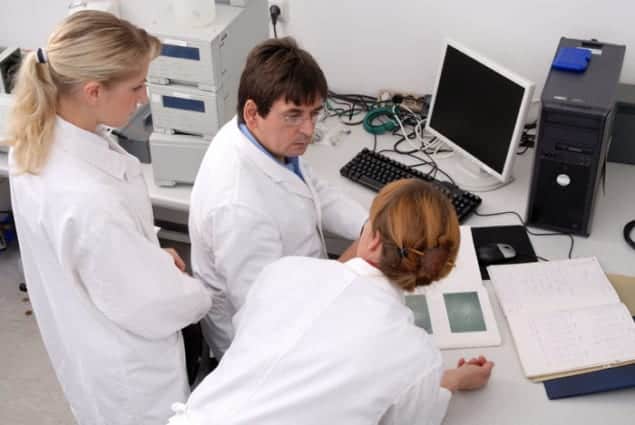
If you think that adding ever more researchers to your group can only be a good thing, think again. Two physicists have, for the first time, quantified how the increasing size of research groups in physics affects the quality of the work it can produce. They conclude that the best group size for experimental physicists is around 25 researchers, while in theoretical physics the number is 13. Adding more researchers to the group over these sizes does not result in an increase in research quality.
Ralph Kenna from the University of Coventry and Bertrand Berche from the University of Nancy, France, used data collected for the UK’s 2008 Research Assessment Exercise (RAE). The RAE was designed to deduce the quality of research being performed at all UK universities based on researchers submitting detailed data about their research groups, including their size and the output of each individual.
Although this information is usually used to rank the quality of the groups’ research, which then dictates how much government funding they receive, what Kenna and Berche have done is to see what impact a group’s size has on the quality of its research. They plotted quality against quantity and fitted the data into a model that treats research groups as a complex system that takes interactions between researchers into account (Scientometrics 86 527).
Quality stays flat
The model indicates that research quality initially increases linearly with group size. However, above a certain limit – known as the upper critical mass – rather than continuing to increase, the dependency of quality on quantity stays flat. The upper critical mass is the maximum number of colleagues with whom a researcher can interact, so that when a group’s size increases beyond this level – 25 for experimental physicists and 13 for theorists – it starts to fragment. “If I was going to build a department from scratch, I would use this result to make sure research groups within it are of this size,” says Kenna.
The research also reveals a lower critical mass of seven for the theorists and 13 for experimental physicists.
In an analysis for Physics World, the researchers found that 69% of UK physics departments have groups that are above the upper critical mass, while 89% of researchers who work in UK physics departments are in such large groups. “According to our study, physics in the UK is in a healthy condition,” says Kenna. “This means that researchers have more than enough colleagues to interact with.”
The researchers most recent work is available at arXiv:1102.4914v2



